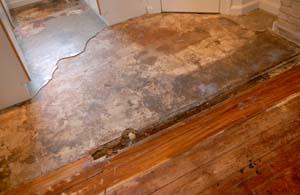They are making a few great annotation on the subject of Fire And Water Damage Prevention overall in this great article beneath.

Water offers life, water invasion on parts where it's not meant to be can result in damages. Houses with water damages odor old as well as mildewy.
Water can come from many resources such as typhoons, floodings, ruptured pipelines, leaks, and sewer concerns. In case you experience water damage, it would certainly be excellent to understand some safety preventative measures. Below are a few guidelines on exactly how to take care of water damages.
Do Prioritize Residence Insurance Coverage Insurance Coverage
Water damage from flooding because of heavy winds is seasonal. You can also experience an unexpected flood when a damaged pipeline suddenly ruptures right into your residence. It would be best to have house insurance policy that covers both disasters such as all-natural calamities, and emergencies like damaged plumbing.
Do Not Neglect to Switch Off Utilities
This reduces off power to your entire house, stopping electrical shocks when water comes in as it is a conductor. Do not neglect to turn off the major water line valve.
Do Remain Proactive and also Heed Weather Informs
Tornado floods can be extremely uncertain. Remain proactive as well as prepared if there is a history of flooding in your community. Pay attention to discharge cautions if you live near a lake, river, or creek . Get valuables from the ground floor and also cellar, then put them on the highest possible degree. Doing so decreases prospective home damage.
Don't Neglect the Roof
Before the weather condition turns terrible, make sure you have a roof inspection. It would certainly be prudent to get this solution each year as it can mitigate complex problems. If there are no openings as well as leakages in your roofing, you can prevent rainfall damages. Your roofing professional will certainly additionally look after damaged seamless gutters or any other indicators of weakening. This will certainly stop water from moving down your wall surfaces as well as soaking your ceiling.
Do Focus On Little Leaks
A ruptured pipeline does not occur over night. Normally, there are red flags that show you have deteriorated pipes in your house. For instance, you may see bubbling paint, peeling wallpaper, water touches, water stains, or dripping noises behind the wall surfaces. At some point, this pipeline will certainly break. Ideally, you should not wait for points to rise. Have your plumbing fixed prior to it causes massive damage.
Do Not Panic in Case of a Ruptured Pipeline
Keeping your presence of mind is vital in a time of situation. Stressing will only worsen the issue since it will certainly suppress you from acting fast. When it comes to water damages, timing is key. The longer you wait, the more damages you can anticipate. Therefore, if a pipeline bursts in your home, promptly shut off your primary water shutoff to remove the source. Then disconnect all electric outlets in the area or shut off the breaker for that part of your house. Call a reliable water damage restoration specialist for assistance.
Water gives life, water intrusion on components where it's not expected to be can result in damage. Residences with water damage scent old and also moldy.
Water damage from flood fees to heavy winds is seasonal. You may see gurgling paint, peeling wallpaper, water touches, water stains, or leaking noises behind the walls. When it comes to water damages, timing is vital.
Some Do's & Don't When Dealing with a Water Damage
DO:
Make sure the water source has been eliminated. Contact a plumber if needed. Turn off circuit breakers supplying electricity to wet areas and unplug any electronics that are on wet carpet or surfaces Remove small furniture items Remove as much excess water as possible by mopping or blotting; Use WHITE towels to blot wet carpeting Wipe water from wooden furniture after removing anything on it Remove and prop up wet upholstery cushions for even drying (check for any bleeding) Pin up curtains or furniture skirts if needed Place aluminum foil, saucers or wood blocks between furniture legs and wet carpet Turn on air conditioning for maximum drying in winter and open windows in the summer Open any drawers and cabinets affected for complete drying but do not force them open Remove any valuable art objects or paintings to a safe, dry place Open any suitcases or luggage that may have been affected to dry, preferably in sunlight Hang any fur or leather goods to dry at room temperature Punch small holes in sagging ceilings to relieve trapped water (don't forget to place pans beneath!); however, if the ceiling is sagging extremely low, stay out of the room and we'll take care of it DO NOT:
Leave wet fabrics in place; dry them as soon as possible Leave books, magazines or any other colored items on wet carpets or floor Use your household vacuum to remove water Use TV's or other electronics/appliances while standing on wet carpets or floors; especially not on wet concrete floors Turn on ceiling fixtures if the ceiling is wet Turn your heat up, unless instructed otherwise

I am just very drawn to 5 Home Safety Tips To Reduce The Risk Of Fire And Water Damage and I'm hoping you enjoyed the post. Loved our posting? Please share it. Help somebody else discover it. Thank you for your time spent reading it.